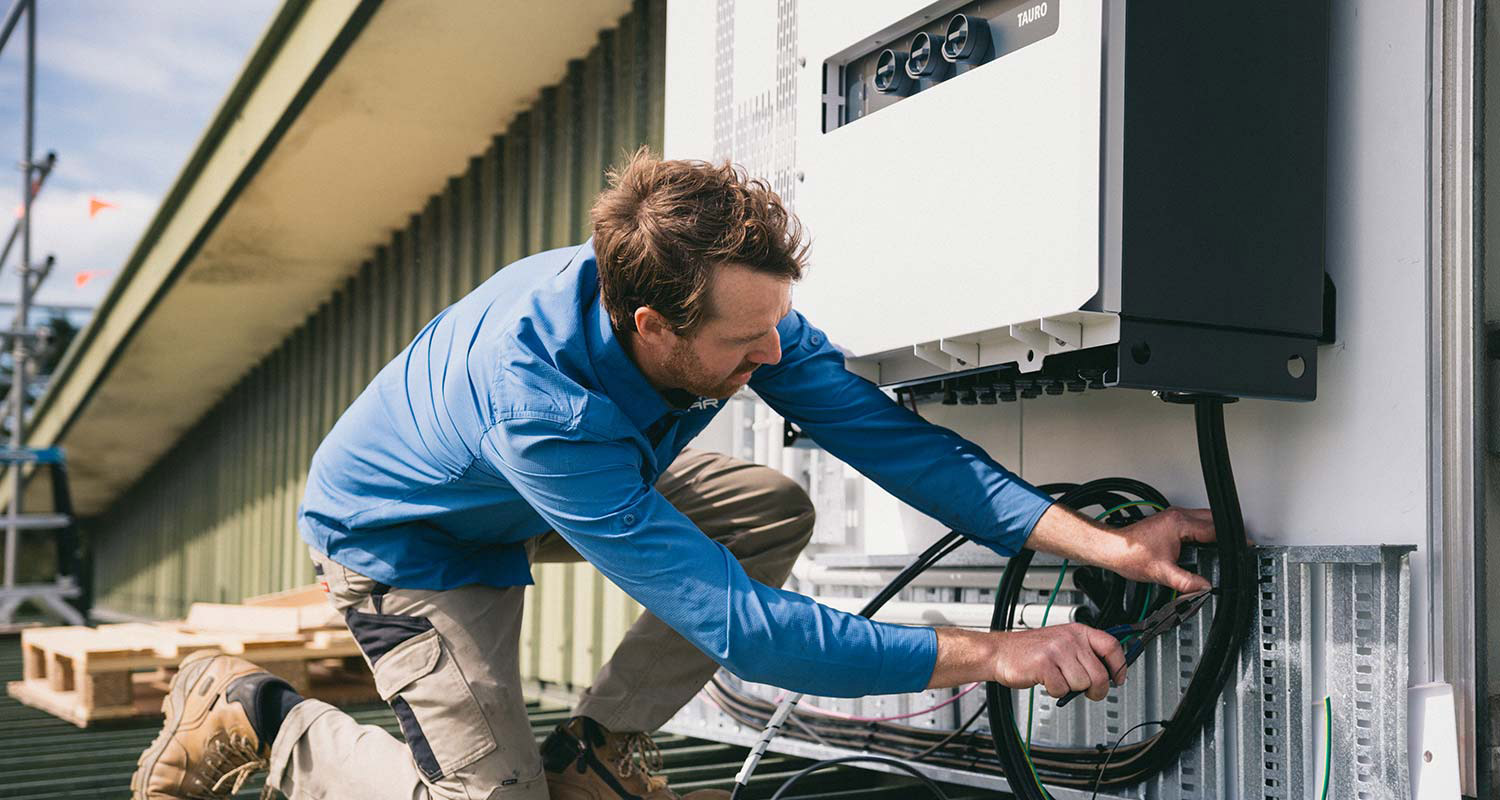
Grand Designs: Garden City Solar Helps Make an Off-Grid Dream a Reality
February 3, 2025
In short, a solar inverter is the device that turns the DC power produced by your solar panels into usable AC power for your household. Without an inverter, the energy generated by your solar panels wouldn’t be compatible with your home’s electrical system. But not all inverters are created equal, and the type of inverter you choose will depend on your specific solar installation.
Types of Solar Inverters
There are two primary types of solar inverters for residential systems:
- String Inverters: These are a more traditional option and work by connecting a series of solar panels (a “string”) to a central inverter that converts the energy for use in your home.
- Microinverters: These are smaller, more advanced units that are attached to the back of each individual solar panel, converting DC to AC right at the source.
Let’s dive into the specifics of each type.
String Inverters: Best for Simple Installations
String inverters are a centralised system that connects to all the solar panels in a series, converting the energy in one go. Typically installed near your home’s main switchboard, they are most effective in straightforward installations where all the panels are installed on a single roof face and are not affected by shading.
Pros of String Inverters:
- Cost-Effective: String inverters are generally less expensive compared to microinverters.
- Simple Design: Easier to troubleshoot since there’s only one inverter in the system.
- Reliable for Unshaded Roofs: Works well in sunny areas where shading or complex roof designs aren’t a concern.
Cons of String Inverters:
- Shading Sensitivity: If one panel in the string is shaded or underperforming, it can affect the entire system, reducing the overall energy output.
- Limited Expansion: Expanding your system in the future is more difficult with string inverters, as they aren’t well-suited for adding more panels.
- 10-Year Lifespan: String inverters usually need to be replaced after 10 years, whereas solar panels last at least 25 years.
Tip: Some string inverters can be paired with DC optimisers to improve performance in shaded areas, but this adds extra cost and complexity to your system.
Microinverters: Best for Complex Installations
Microinverters offer more flexibility and higher efficiency for complex installations. They are attached to each solar panel individually, allowing each panel to operate independently. If one panel is shaded or underperforming, it doesn’t affect the rest of the system.
Pros of Microinverters:
- Panel-Level Performance: Since each panel has its own inverter, shading on one panel won’t reduce the output of the others.
- Easier System Expansion: Adding more panels to your system in the future is simpler with microinverters.
- 25-Year Lifespan: Microinverters last as long as the panels, so you won’t have to worry about replacing them as frequently as string inverters.
Cons of Microinverters:
- Higher Cost: Microinverters are more expensive upfront, though their long lifespan may offset this cost over time.
- More Complex Repairs: If one microinverter fails, repairing the issue can be more difficult as it involves getting onto the roof. We work on roofs daily so this is rarely an issue.
Fire Safety with Microinverters
One of the less-known but significant advantages of microinverters is their reduced fire safety risk. Solar fires, especially in Australia, have been linked to issues with DC isolators in string inverter systems. These DC isolators, installed on rooftops, are exposed to the elements and can deteriorate over time. Water ingress or damage can lead to short circuits and potentially cause fires.
With microinverters, this risk is dramatically reduced. Here’s why:
- No High-Voltage DC Running Across Your Roof: In a microinverter system, the DC to AC conversion happens at the panel itself. This means there’s no high-voltage DC running across your roof, eliminating one of the main fire risks associated with string inverter systems.
- Safer in Harsh Weather: Microinverters don’t require external DC isolators, which are prone to damage from exposure to wind, rain, and UV rays. The absence of these isolators adds a layer of safety to the system.
- Rapid Shutdown Capability: Many microinverters come with built-in rapid shutdown features, ensuring the system can be quickly and safely turned off if necessary.
By choosing microinverters, you not only get superior performance but also peace of mind that your system is less likely to pose a fire hazard.
Which Inverter Is Right for You?
Choosing between a string inverter and microinverters ultimately comes down to your home’s unique setup and energy goals. If your roof is relatively simple and unshaded, a string inverter may be the more cost-effective option. However, if you have a more complex roof design, are concerned about shading, or want to reduce fire risk, microinverters are worth the investment for their superior performance and safety.
At Garden City Solar, we understand that every home is different. That’s why we work closely with you to assess your property and recommend the best solar solution. Whether you’re looking for a simple string inverter setup or a more advanced microinverter system, we’re here to help you make the right choice for your solar journey.
Talk to Garden City Solar Today
Looking to go solar in New Zealand? Get in touch with Garden City Solar today to discuss your options and find the best inverter solution for your home. We’ll provide expert advice and ensure your solar system is designed to deliver maximum efficiency, safety, and long-term savings.ings.

